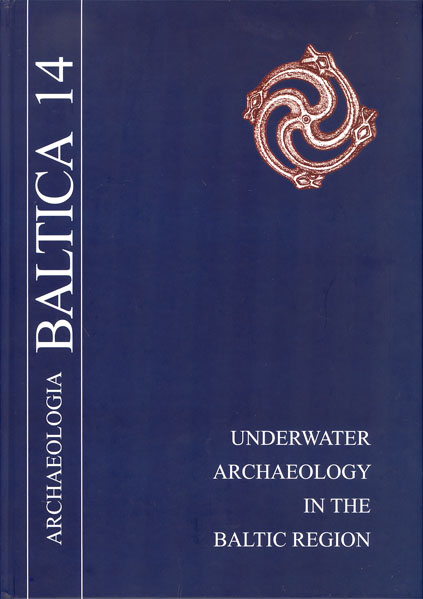Volume 14 (2010): Underwater Archaeology in the Baltic Region, December 2010

Order by:
Pub. online: 20 Dec 2010
Type: Introduction
 Open Access
Open Access
Journal:
Archaeologia Baltica
Volume 14 (2010): Underwater Archaeology in the Baltic Region, pp. 7–10
Pub. online: 20 Dec 2010
Type: Article
 Open Access
Open Access
Journal:
Archaeologia Baltica
Volume 14 (2010): Underwater Archaeology in the Baltic Region, pp. 12–17
Pub. online: 20 Dec 2020
Type: Bibliography
 Open Access
Open Access
Journal:
Archaeologia Baltica
Volume 14 (2010): Underwater Archaeology in the Baltic Region, pp. 18–25
Pub. online: 20 Dec 2010
Type: Article
 Open Access
Open Access
Journal:
Archaeologia Baltica
Volume 14 (2010): Underwater Archaeology in the Baltic Region, pp. 28–46
Abstract
Pub. online: 20 Dec 2010
Type: Article
 Open Access
Open Access
Journal:
Archaeologia Baltica
Volume 14 (2010): Underwater Archaeology in the Baltic Region, pp. 47–64
Abstract
Pub. online: 20 Dec 2010
Type: Article
 Open Access
Open Access
Journal:
Archaeologia Baltica
Volume 14 (2010): Underwater Archaeology in the Baltic Region, pp. 65–76
Abstract
Pub. online: 20 Dec 2010
Type: Article
 Open Access
Open Access
Journal:
Archaeologia Baltica
Volume 14 (2010): Underwater Archaeology in the Baltic Region, pp. 77–84
Abstract
Pub. online: 20 Dec 2012
Type: Article
 Open Access
Open Access
Journal:
Archaeologia Baltica
Volume 14 (2010): Underwater Archaeology in the Baltic Region, pp. 85–88
Abstract
Pub. online: 20 Dec 2010
Type: Article
 Open Access
Open Access
Journal:
Archaeologia Baltica
Volume 14 (2010): Underwater Archaeology in the Baltic Region, pp. 89–97
Abstract
Pub. online: 20 Dec 2010
Type: Article
 Open Access
Open Access
Journal:
Archaeologia Baltica
Volume 14 (2010): Underwater Archaeology in the Baltic Region, pp. 100–119
Abstract